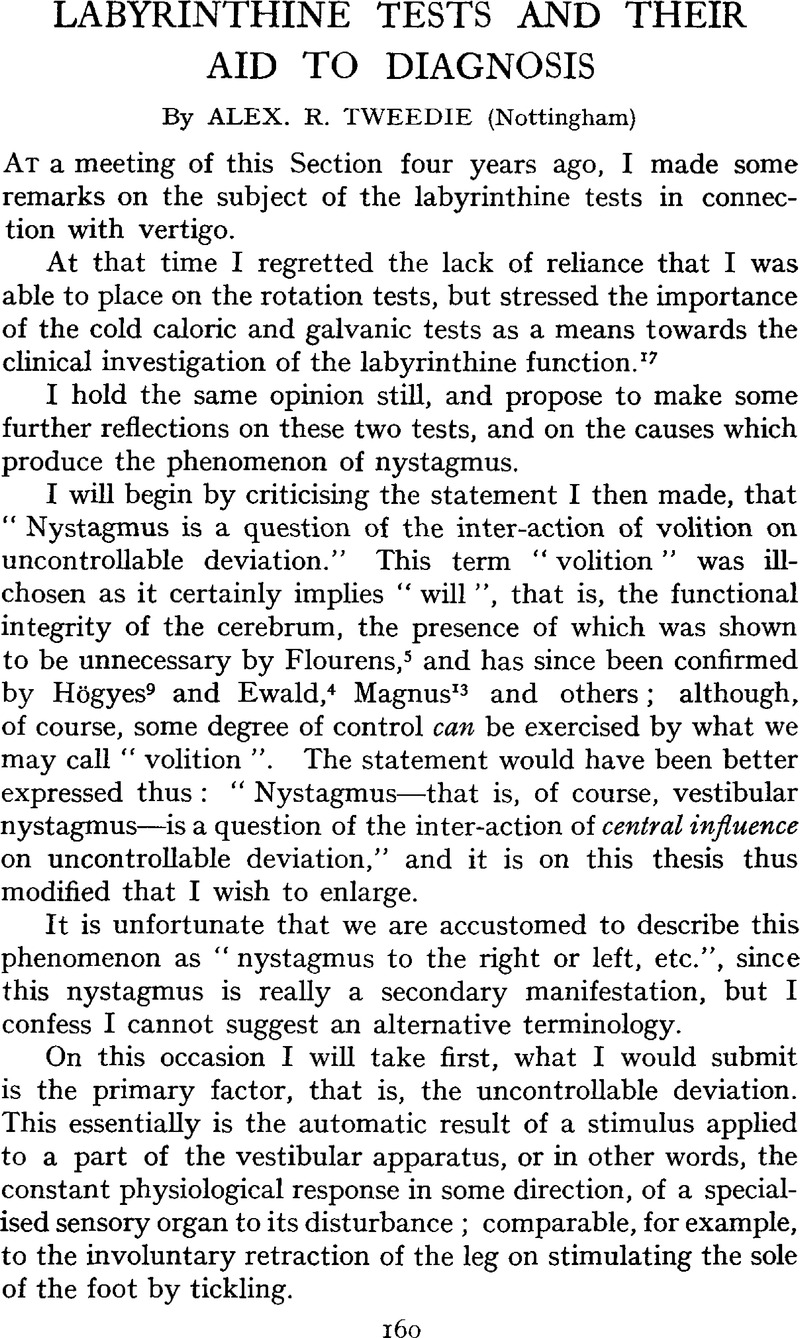Crossref Citations
This article has been cited by the following publications. This list is generated based on data provided by Crossref.
Tweedie, A. R.
1935.
Some Further Remarks on Labyrinth Tests.
Proceedings of the Royal Society of Medicine,
Vol. 28,
Issue. 10,
p.
1381.
Peters, E. A.
1935.
Societies' Proceedings.
The Journal of Laryngology & Otology,
Vol. 50,
Issue. 10,
p.
776.
Glaser, Mark Albert
1937.
XXXV The Cause of Dizziness in Head Injuries: A Vestibular Test Study in Sixty-Six Patients.
Annals of Otology, Rhinology & Laryngology,
Vol. 46,
Issue. 2,
p.
387.
1948.
Royal Society of Medicine—Section of Otology.
The Journal of Laryngology & Otology,
Vol. 62,
Issue. 7,
p.
465.
Watson, Donald
1948.
Progress in the Treatment of Mastoid Infection and Some of its Complications.
Proceedings of the Royal Society of Medicine,
Vol. 41,
Issue. 3,
p.
155.
Nylén, C. O.
1950.
A Review and Future Prospects.
The Journal of Laryngology & Otology,
Vol. 64,
Issue. 6,
p.
295.
Watson, Donald
1952.
Labyrinthitis.
The Journal of Laryngology & Otology,
Vol. 66,
Issue. 6,
p.
247.
Ormerod, F. C.
1963.
Developments in the Recording of Nystagmoid Movements of the Eye.
The Journal of Laryngology & Otology,
Vol. 77,
Issue. 3,
p.
171.



